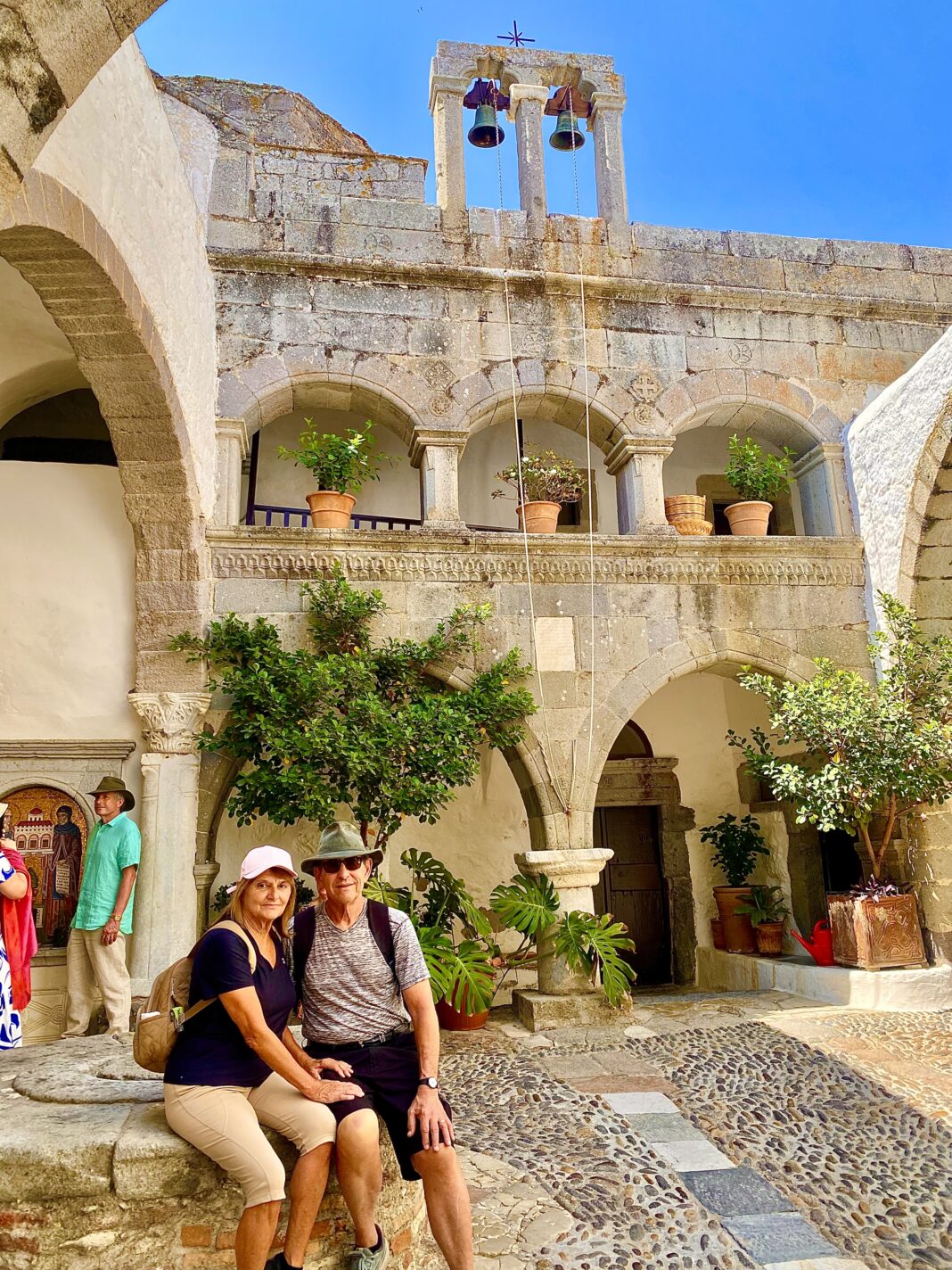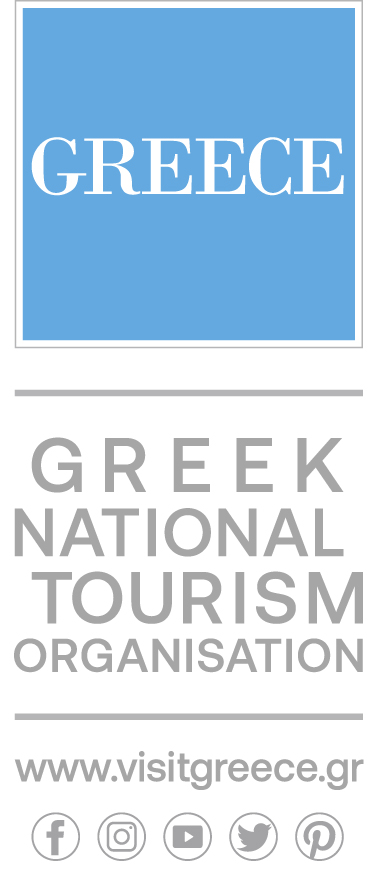By Lynn Lotkowictz
To celebrate our 50th wedding anniversary this year, my husband, Bill, and I planned a three-week adventure in Greece. We started with two nights in Athens to recover from jet lag and enjoy the very hectic and crowded city. The old town area, Plaka, is like a little village within the city and my favorite part of Athens. We had several good meals, enjoyed the views of the Acropolis from our hotel rooftop bar, and caught up on some much-needed sleep.
The next phase of our three-week journey was aboard the Star Flyer, a 360-foot clipper ship. With only 130 guests (capacity is 166), the experience is casual and very unique. There are no casinos or shows, just a few good talks and the rest of the time you do what you wish. On board, you could don a harness to hang out in the crow’s nest 65 feet above the sun deck or relax by one of the two small pools. My favorite was watching the crew raise the sails as it takes a good deal of effort. The dramatic look of a clipper ship against the blue Mediterranean Sea with four masts and white sails is spectacular.
We visited the islands Patmos, Amorgos, Paros, and Spetses in Greece, and made a stop in Kusadisi, Turkey. These are islands many of the bigger ships cannot reach, and we had the chance to explore on our own, take an excursion, or take advantage of various water activities provided by the Star Flyer sports team.
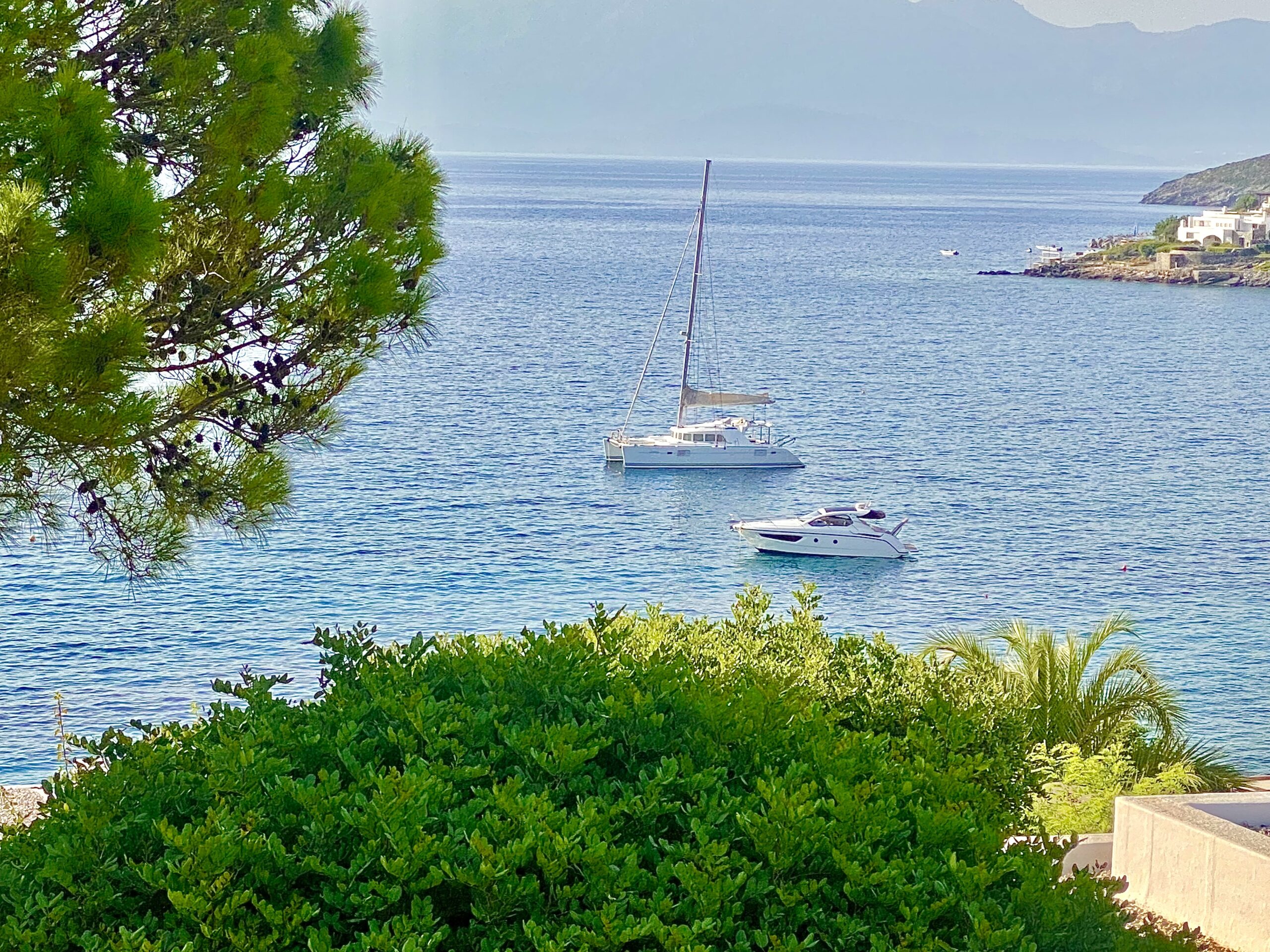
These smaller, less-populated islands have an authenticity that places like Santorini and Mykonos have lost from overdevelopment and tourism. The residents are friendly, businesses cordial, and they appreciate your visit. The food is fresh, simple, and delicious. As tourism is their main source of income, making sure you have a good experience is paramount. Some of the islands actually look like a scene from the movie Mama Mia: white-washed small houses and businesses with orange, purple, or red bougainvillea draping the doorways, a friendly face to greet you on the step while having their morning coffee in the bright sun. Greece is bathed in a special beauty. We never saw a cloud in the sky the entire three weeks of our visit. The colors and light brought from the intense sun against the blue sea, blue sky, and mountains create a setting that warms the soul.
The second part of our trip was a visit to my father’s birthplace, Crete, the largest Greek island in both area and population, located at the southern edge of the Aegean. The people of Crete are passionate and proud of their history and independence. The island is a blend of Ottoman/Turkish, Venetian, and Minoan influences. It is still cosmopolitan with plenty of historical sites and beautiful beaches, mountains, and hiking opportunities.
Chania, on the northwest coast, was our first stop. With its beautiful Venetian harbor, narrow streets, and delicious foods, it’s a favorite vacation spot for Europeans. The food is authentic Cretan and excellent. The nightly entertainment along the waterfront included Bouzouki music, a tenor and his partner singing in Italian, and Middle Eastern Tumbak (percussion instrument of the Persian empire) players. The waterfront is lined with many restaurants designed for you to witness the dramatic sunsets over the Mediterranean. While there are many “touristy” options, my favorite is Tamam, which serves delicious Greek food with some Eastern influences. The space was built in 1400 by the Venetians as a public bath, and you can still see where the bathers sat.
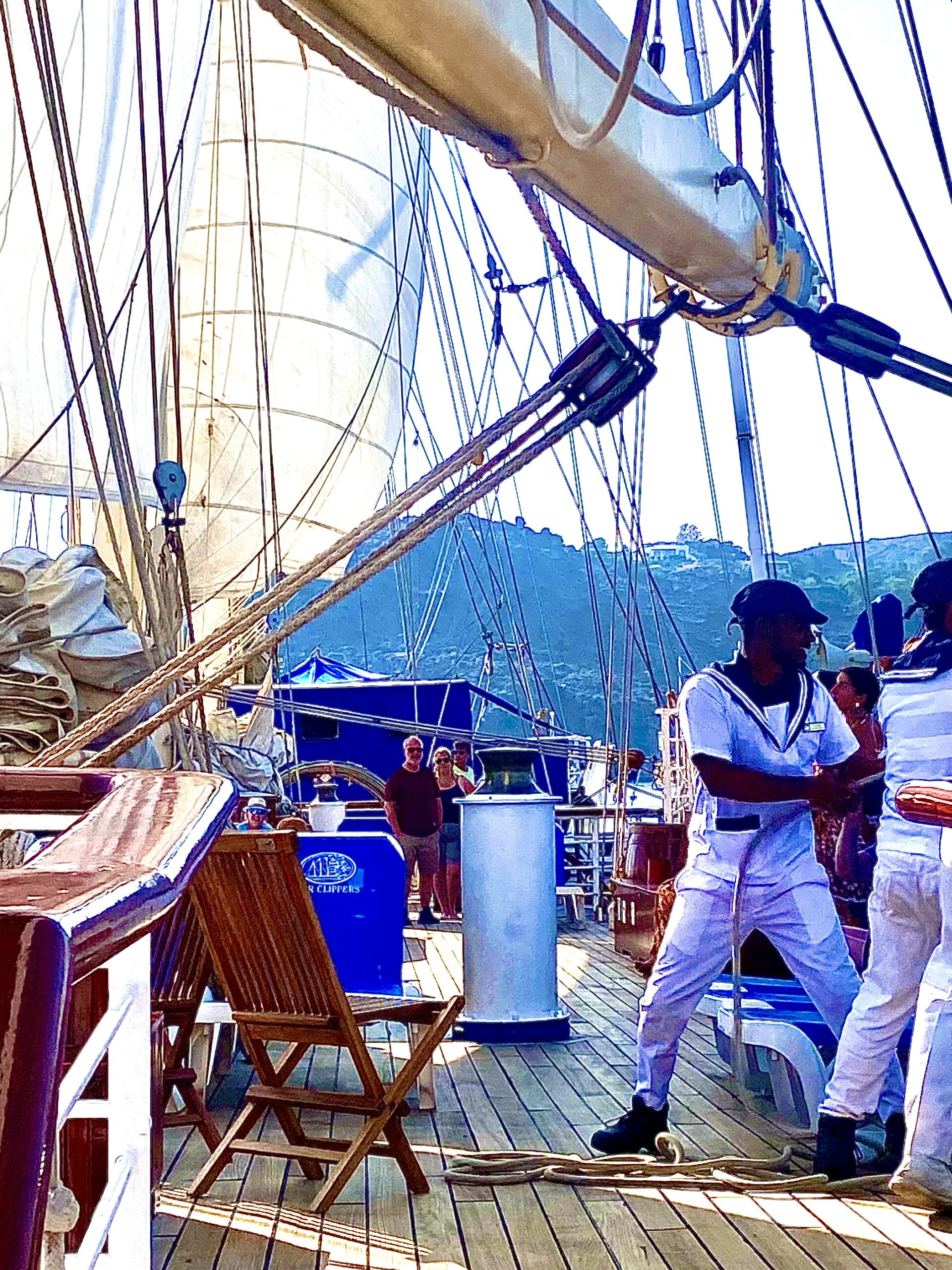
We took a late afternoon trip about thirty minutes out of town to the mountain community of Vatolakkos and toured the Manousakis Winery. It offered a great way to see the surrounding mountains, vineyards, and a family sharing their lifestyle, while we enjoyed good local wine, a Greek salad, and some feta cheese.
Since this is the part of Crete my father left in 1917 as a boy, I was particularly interested in some history of the area. We visited the residential neighborhood of Halepa, which houses the museum/home of Eleftherios Venizelos, Cretan statesman and prime minister, and prominent leader of the movement to unite Crete with Greece. My grandfather, Adam, was part of a militaristic team that existed for a short period to quell civil unrest as Crete transitioned to join Greece after years of Ottoman rule.
The museum director was overjoyed that I was interested enough to research my grandfather’s background and offered to seek out, via her colleague’s digital records system, more info about his time with this police unit. Unfortunately, because his team was short-term, there wasn’t much information available. However, the trip to Halepa was well worth it. The upscale neighborhood was clean with tree-lined quiet streets. We relaxed with a frappe (ice coffee) to take in the locals. The proprietor chatted with us and called for a taxi when we were ready to head back to Chania.
Crete is about 170 miles long, and we headed to Agios Nicholas, the easternmost part, about a three-hour ride from Chania. As an anniversary present to ourselves we stayed at Elounda Beach Hotel and Villas, an unpretentious luxury property that has celebrity status as Lady Gaga, Brad Pitt, and others have vacationed there.
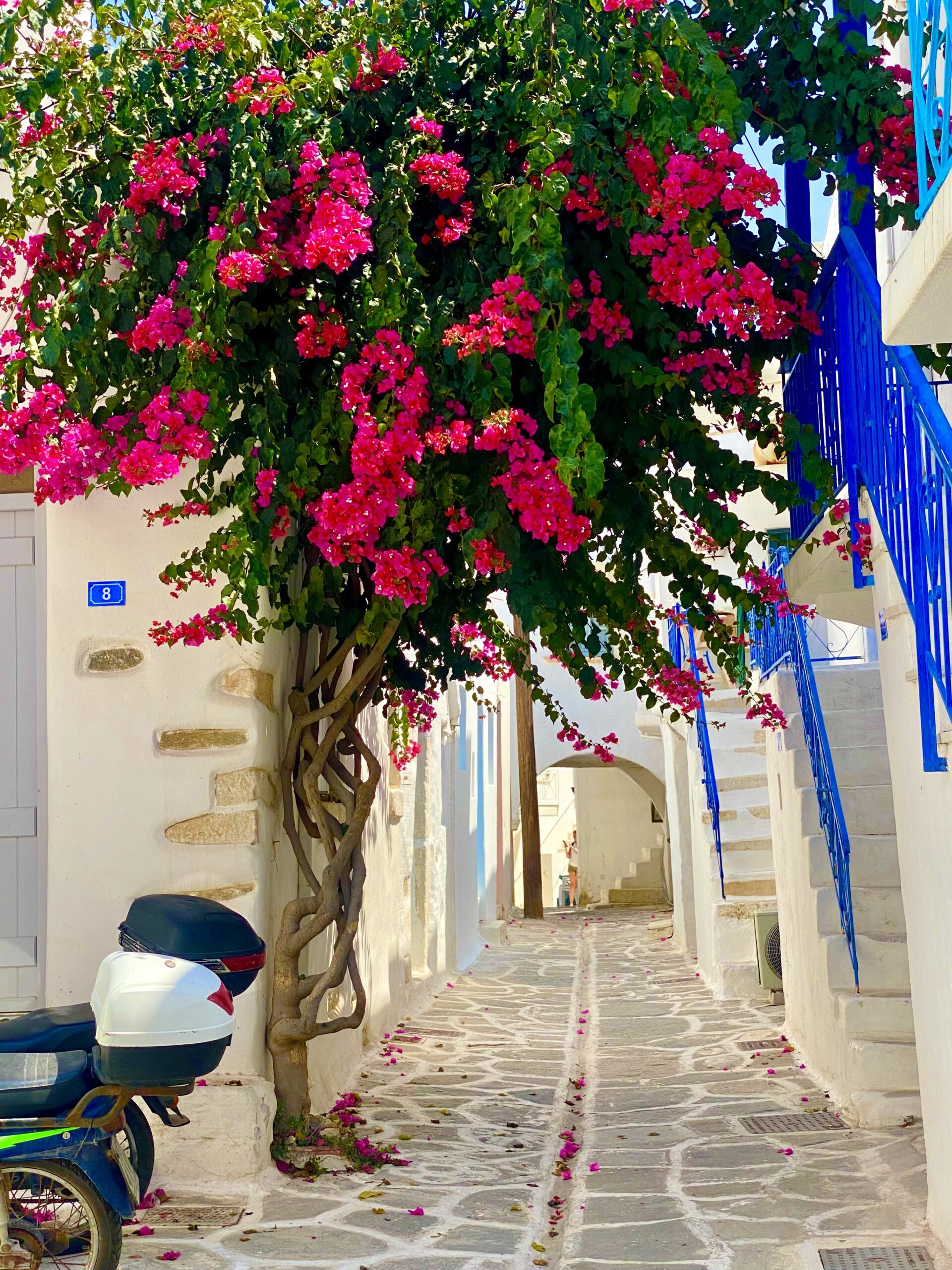
The location overlooking Mirabello Bay makes Elounda and Agios Nicholas the perfect place to relax. The best excursion is the 15-minute boat ride to Spinalonga. An island located in the gulf of Elounda, Spinalonga was a leper colony from 1903 to 1957, one of the last active leper colonies in Europe. It’s worth a trip with a guide to understand the history and community the lepers created over the 40-plus years it existed.
The restaurants in and around Elounda and all of Greece, generally, serve good quality, fresh food. You are expected to sit for two or three hours. Sometimes it’s hard to even get your check.
We found when asking for ours the waiter would bring the traditional raki (very strong after-dinner drink in a shot glass), then either fresh fruit or a desert. Or both, no charge. By then another 30 to 40 minutes have passed and still no check. You sense the people know how to relax, but it’s more than that. The culture has a great respect for family gatherings and quality time with friends over a meal. It’s really quite refreshing!
Elounda has a blissful, chill vibe. We were there during the peak of Europe’s heatwave and were fortunate to be staying at a beach property. The cool and crystal clear, blue-green water was so inviting we stayed submerged most of the day. The property houses six or seven good restaurants but is so spread out and designed for privacy that you never feel crowded. We met people from all over the world who visit the area on regular basis.
Our final week was in Ammoudara, a small beach community outside the city of Heraklion, Crete’s largest and busiest city. I discovered Ammoudara as the base of a Global Volunteers program I participated in about 12 years ago. The focus of the program is helping students with English using native speakers. It was such a life-changing experience, I returned three more times over the next 10 years. Sam, the director of the Crete program, Matina, the then-teacher, and her daughter, a student, Nefeli, have become dear friends. We dined together and caught up on each other’s life and families. Nefeli (the name in Greek means “cloud”), is now 24, finishing at the University in Athens and is a beautiful, bright young woman. These friends are a true gift to me.

A good excursion from here is Knossos, the largest Bronze Age archeological site on Crete. It is worth a visit. Also, Heraklion has several good museums and art galleries. Nefeli tells me the best Bougatsa – traditional Greek dessert made with custard wrapped in golden brown, crispy phyllo garnished with icing sugar and cinnamon – is at Kyr Kor, located in the center of Lion’s Square, Heraklion. And best authentic Cretan food is served at a restaurant called Peskesi. Two spots in Heraklion I wouldn’t miss.
It’s always nice to stay in the smaller, more authentic communities where you can observe the locals living everyday life. The public transportation is good and easy to visit Heraklion via a 20-minute bus ride for 1.70 Euros. And, you get to experience locals running errands, going to work, and vacationers visiting the sites.
As our trip came to an end, we flew from Crete to Zurich, about an hour, with a four-hour layover, some delays, then a nine-hour flight from Zurich to Tampa. The journey was exhausting, but we would do it all again tomorrow if we had the chance.






